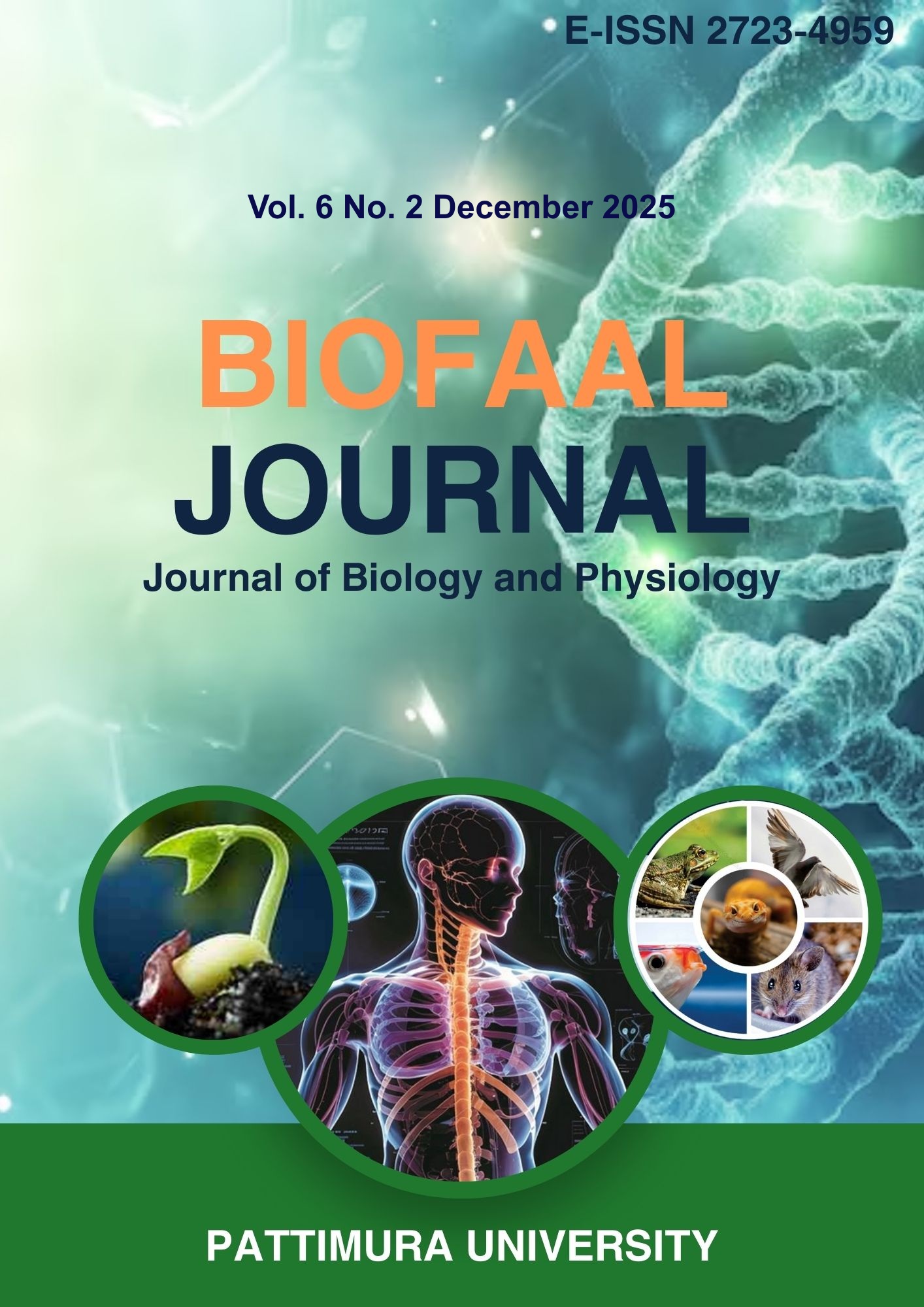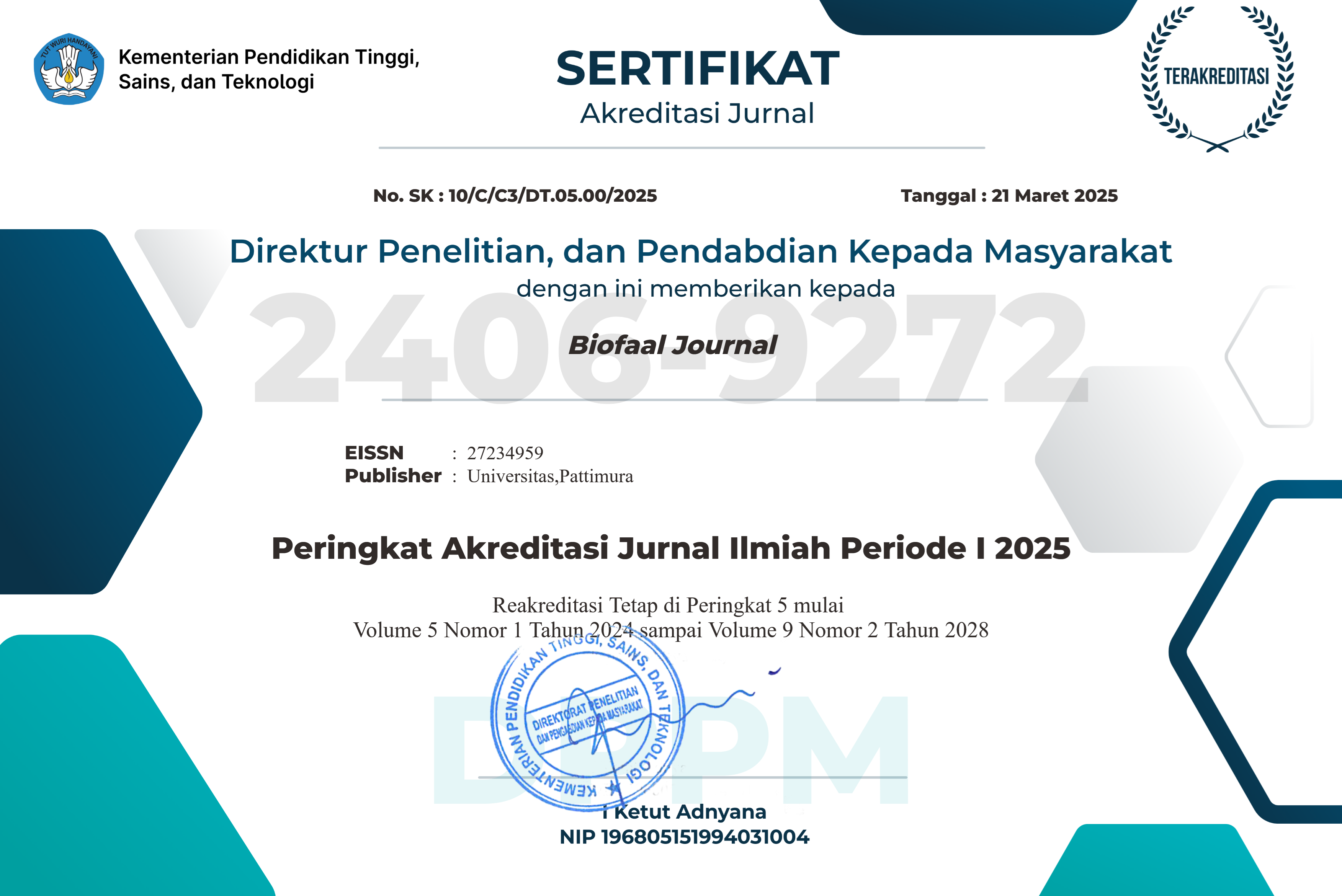Organoleptic Test of Nutmeg Pulp Residue Tea (Myristica fragrans Houtt) As a Nutriceutical
Abstract
Nutmeg (Myristica fragrans Houtt) is a native Indonesian spice, and its pulp is often discarded as waste after juice production. However, the residue still contains essential oils and active compounds such as flavonoids, phenols, and myristicin, which may benefit human health. This study aims to evaluate the potential of nutmeg pulp residue as a nutraceutical herbal tea through organoleptic testing, assessing aroma, taste, clarity, and color. The research employed a completely randomized design with three replications. Organoleptic and hedonic tests were carried out on 25 panelists using Friedman and Wilcoxon tests. Results showed that tea clarity scored highest in preference (3.72), followed by aroma (2.28), taste (2.18), and color (1.82). The nutmeg pulp tea was generally acceptable, although improvements in color and flavor intensity are needed. This innovation offers an ecological and economic solution for waste utilization, with potential for rural product diversification and health benefits.
Downloads
Copyright (c) 2025 Chomsa Dintasari Umi Baszary, Dece Elisabeth Sahertian

This work is licensed under a Creative Commons Attribution-NonCommercial-ShareAlike 4.0 International License.
1. Author retain copyright and grant the journal right of first publication with the work simultaneously licensed under a creative commons attribution license that allow others to share the work within an acknowledgement of the work’s authorship and initial publication of this journal.
2. Authors are able to enter into separate, additional contractual arrangementfor the non-exclusive distribution of the journal’s published version of the work (e.g. acknowledgement of its initial publication in this journal).
3. Authors are permitted and encouraged to post their work online(e.g. in institutional repositories or on their websites) prior to and during the submission process, as it can lead to productive exchanges, as well as earlier and greater citation of published works.








